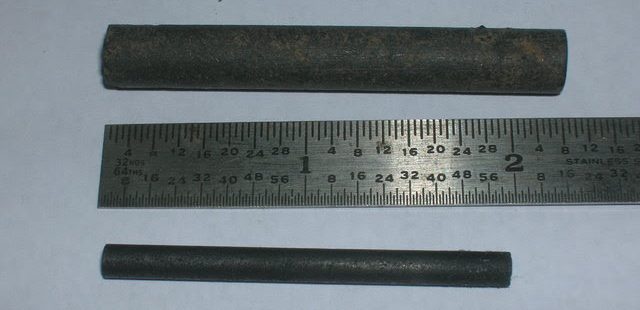This is the waste left over after using the world’s most expensive electricity. See if you recognize it. You will see it laying on the ground over much of rural Africa.
Do you know what it is? Took me a while too.
These are graphite, the rods in the center of common zinc/carbon flashlight batteries. The rods remain after kids play with the dead batteries, after the batteries are crushed, corroded and the electrolyte washes away.
So that is what they are, and how they got there. But how is it that they represent the most expensive electricity?
If we look at the energy stored in common low-cost flashlight batteries and compare with the retail costs, we see prices per killowatt hour for that electricity that are astounding.
The western world, and even grid power in Africa and Asia, pay about (USD) $0.10-0.50 for a kilowatt hour of electricity. That’s quite a range, with a few places paying less and a few paying more. We commonly use several kilowatt hours a day without much thought. But if you don’t have grid power, you might buy your electricity as flashlight batteries. If so, this is what you have to pay.
The true cost of a battery
A typical “D” size battery is of course 1.5 volt (more or less) and has around 8000 milliampere-hours (mAh) of capacity, or 8 amp-hours. That gives us 12 watt hours. So, to get a kilowatt hour we need 1000/12, or 83 of them. Now take a typical cost for that battery. in US currency, say it’s about (USD) $1. At that price, to buy a kilowatt hour of power costs $83.
The smaller batteries increase the cost of electricity even more. Let’s take a “AA” alkaline, a premium little battery for a hand torch or flashlight, or a portable radio.
Only the poorest people on the planet buy their electricity this way.
The “AA” battery will give us about 2850 mAh of capacity, or 4.275 watt hours. We will need about 234 of them to give us a kilowatt hour. Even if we find a bargain, they cost more than (USD) $1 each and can be more than (USD) $2.50 in some countries. So, we are looking at $234 – $580 per kilowatt hour. Common zinc/carbon “AA” batteries have less than 1000 mAh, so we need at least 1000 of them to buy a kilowatt hour of power. You can buy these barebones batteries for maybe as low as (USD) $0.25 each, but that comes out to more than $250 per kilowatt hour, and that is if they are fresh and not too old sitting on the shelf when you buy them.
Here’s the heart of the problem. Only the poorest people on the planet buy their electricity that way. Everyone else gets grid power, cheap.
There are alternatives. Solar home systems can bring down the cost of electricity in rural and off-grid households. Hundreds of options exist, and dozens have been catalogued with standardized data and descriptions in Engineering for Change’s Solutions Library.
See “solar home systems” in E4C’s Solutions Library
About the Author
Larry Bentley is a contributing editor at Engineering for Change and a retired engineer who worked for more than 35 years in the telecommunications industry. Mr. Bentley specialized in construction project management for AC/DC power systems, generators, switchgear and UPS systems. He has used his expertise to work in communities in 20 developing countries, including refugee camps in Nepal, Uganda, and Ethiopia, electrical system evaluation in hospitals in Liberia and Sierra Leone during the Ebola crisis, and he repaired water wells in Ethiopia as part of a drought response.



A very insightful piece